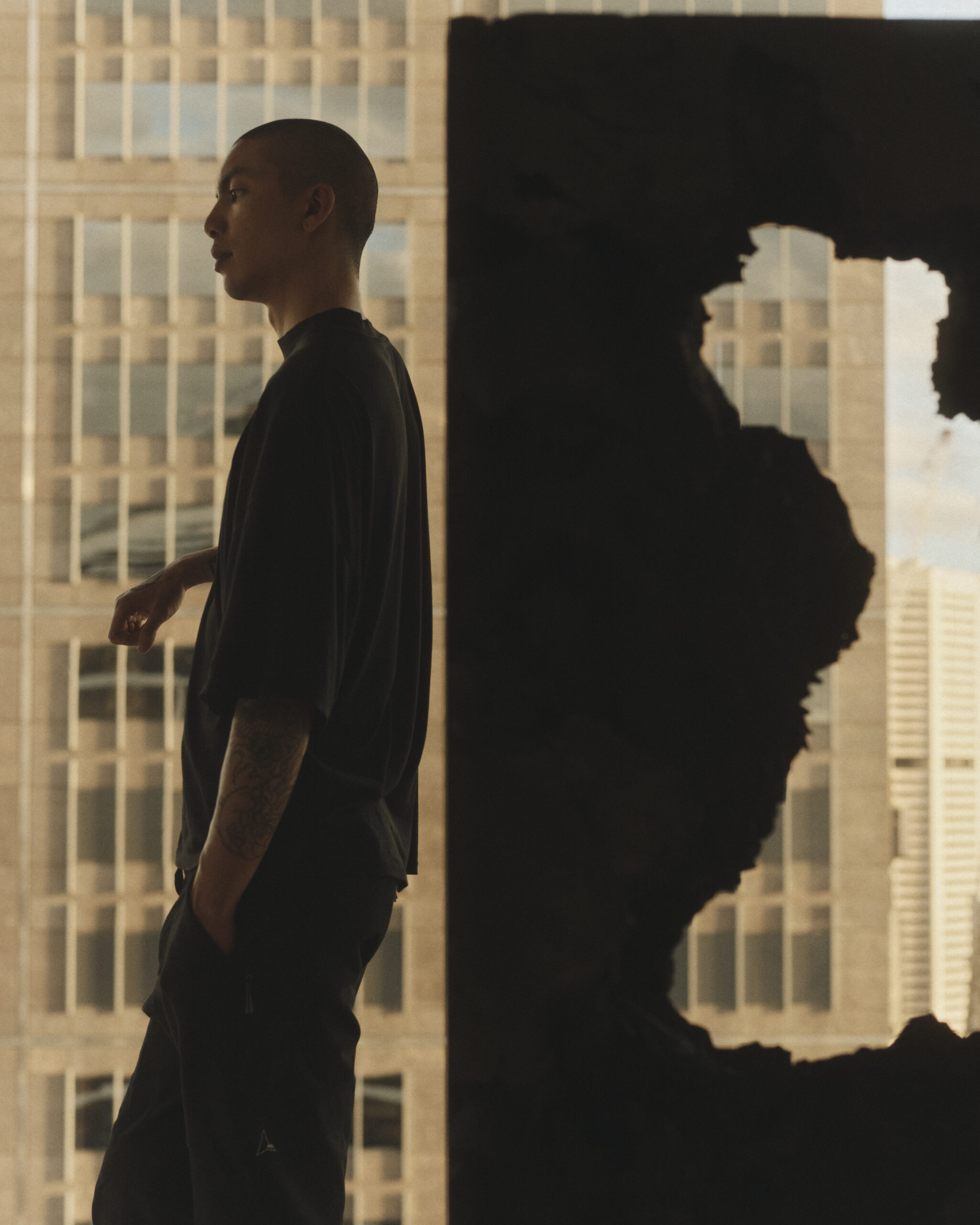
To celebrate our recent curation of Deloitte Sydney’s new offices in Quay Quarter Tower, we sat down with sculptor and installation artist Kien Situ.
Art Pharmacy has curated Deloitte Sydney’s art collection for their brand-new offices at the multi-award-winning Quay Quarter Tower.
An eclectic mix of 20 established to emerging artists, the collection showcases some of Sydney’s most sought-after and exciting young artists including Kien Situ.
Situ’s gravity-defying landscape sculpture, Shanshui (Portal) acts as a threshold or portal. Made from mo and gypsum cement, the work gives form to natural light and frames the steel and glass of neighbouring skyscrapers.
What was a favourite moment or process for you throughout this engagement?
When I make work, it’s pretty chaotic and I can’t say I always enjoy it. The work is heavy, dusty, dirty, stressful and I usually do it alone in the dead of night. When I’m done I almost look like I’ve crawled out of a mine.
I tend to plan in the day and execute at night but I also can’t see as well at night, except with light from a head torch. Also, inside the mold or ‘shell’ of the sculpture (which is a box or casing), I don’t completely know what it’s going to look like so sometimes I really am stabbing in the dark. But in a way, I start to feel that eventually, it doesn’t matter what it’ll look like; I’m just feeling it out in the darkness. I guess it’s about pushing the physical matter to the point that the invisible matters get really turned up – embodied ideas, intent, the pursuit of space, a return to nothing – in a way, doing nothing at the right time… I’ve taken away my vision to aid in this.
I felt good when I was finished though. Uncasing the sculpture from its mold is like unwrapping a present. I get to see it for the first time. It’s often said that it’s about the process and not the end result, but I don’t always agree with that when it comes to my practice – sometimes the process is a hassle and it’s this end reveal that really drives me.
“I guess it’s about pushing the physical matter to the point that the invisible matters get really turned up – embodied ideas, intent, the pursuit of space, a return to nothing – in a way, doing nothing at the right time; so I take away my vision to aid in this.”
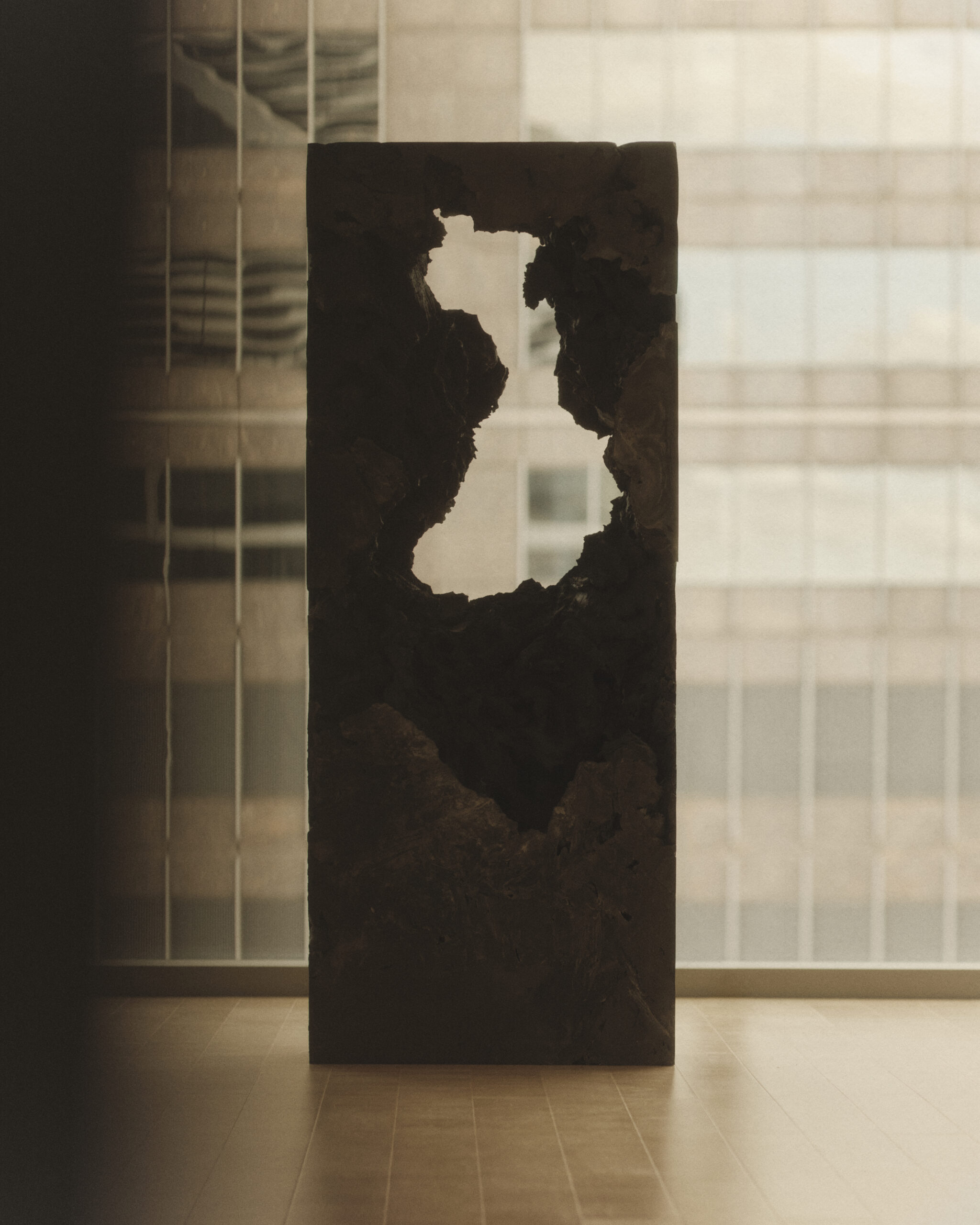
Could you tell us about your connection with ink and language in your work Shanshui (Portal)?
The Chinese word for ‘Ink’ is composed of the Chinese letters for ‘Black’ and ‘Earth’. Ink is made of all elements and is of mineral, earthly origins. It’s an early material that had the ability to transmit ideas through forms of calligraphy, writing and painting in history.
I like mixing a material that is ancient, murky, personal and historical with a material that is industrial, brutal, precise and has a kind of faceless modernity to it. They fight and challenge one another, and the result feels both explosive and petrified at once. A kind of perfect tension.
My own connection with language is broken. Fragments of language and culture exist from my family like incomplete images with blank spaces in-between. That’s sometimes how I view what I do as a feeling – incomplete, missing something, imperfect… like a crusty demo tape that can only be done once which captures the dusty atmosphere of the gear and room it was recorded in – yet the intent is clear and precise, and there’s something warm about this kind of imperfection.
“I like mixing a material that is ancient, murky, personal and historical with a material that is industrial, brutal, precise and has a faceless kind of modernity to it. They fight and challenge one another, and the result feels both explosive and petrified at once. A kind of perfect tension.”
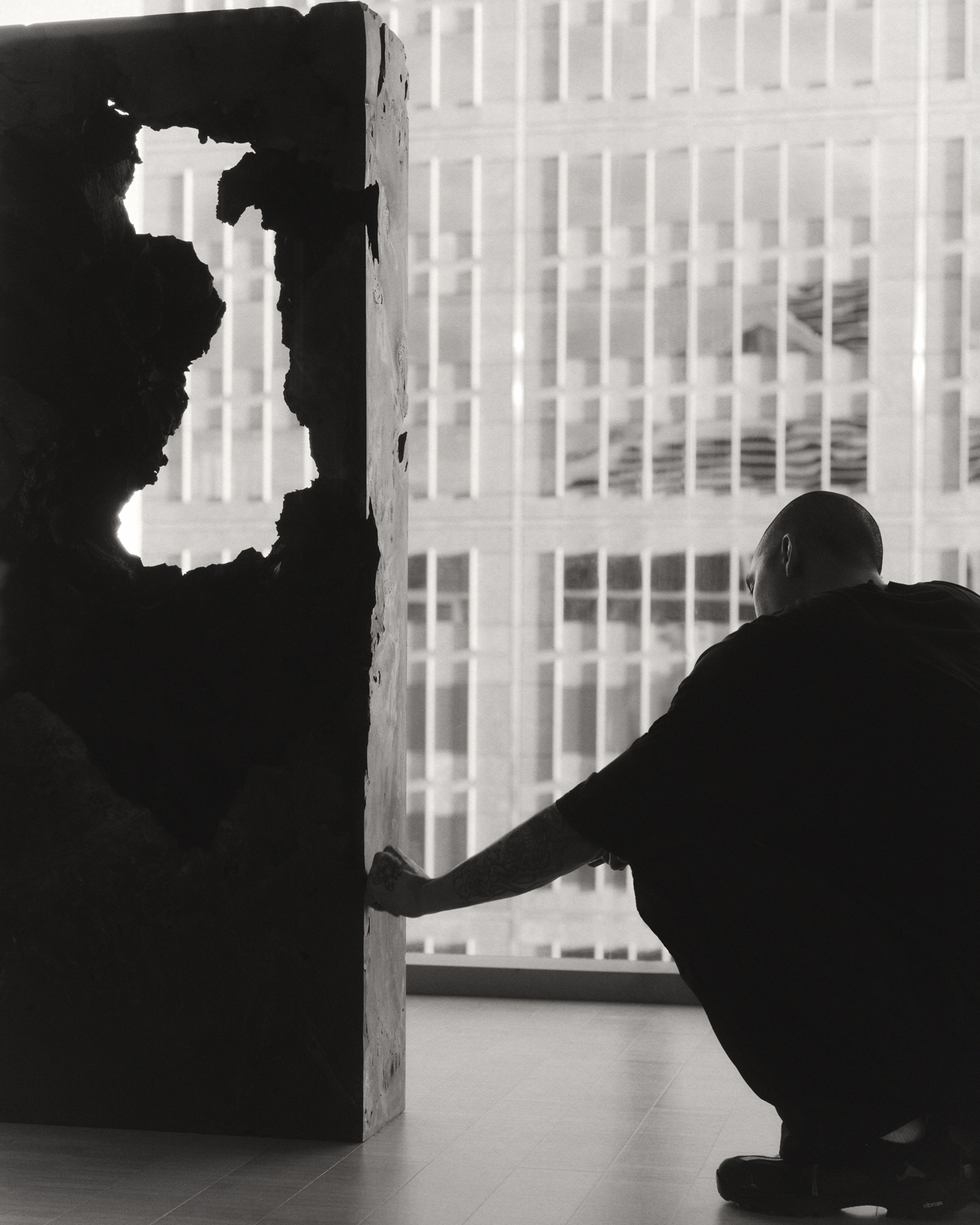
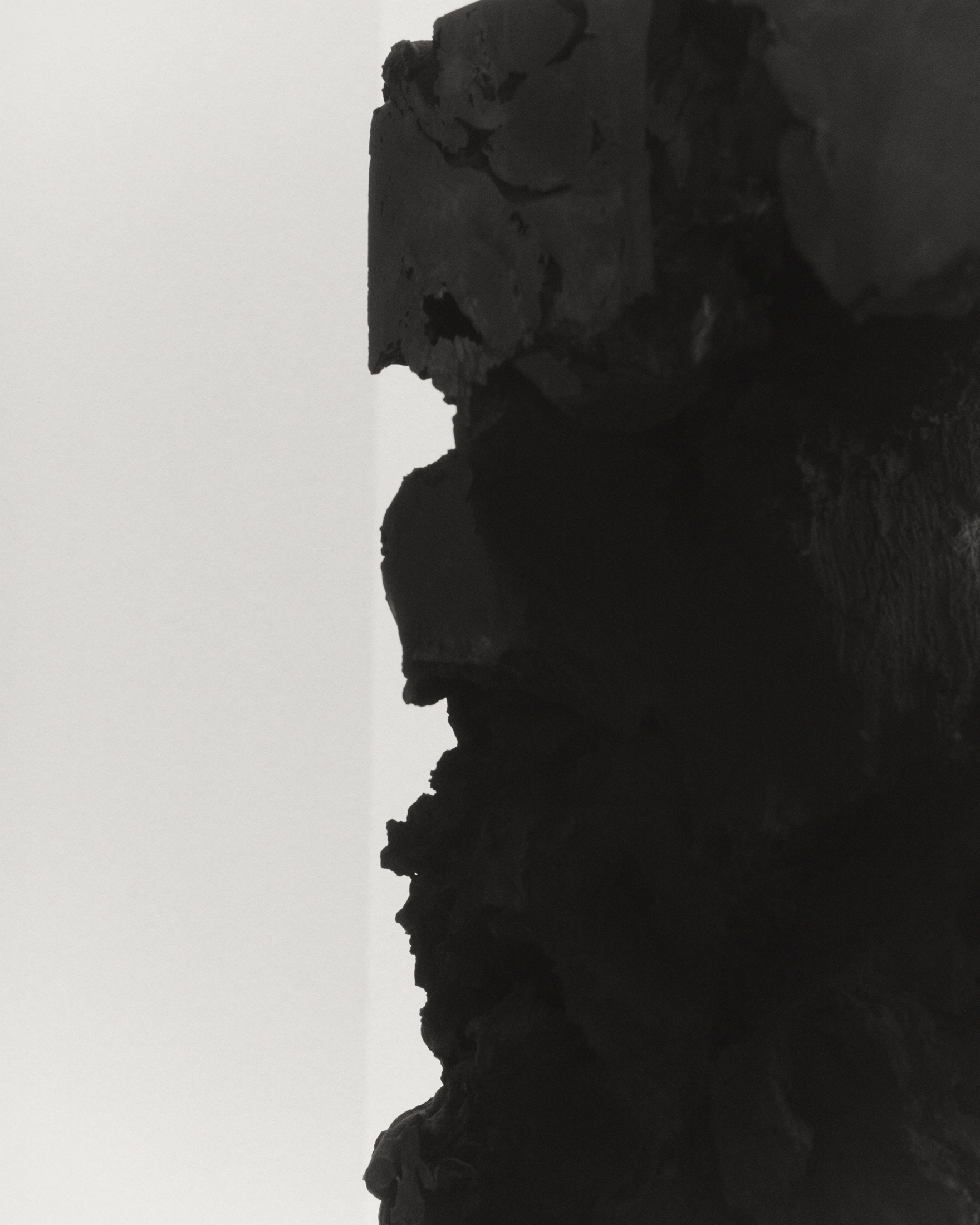
How does your work connect with the surrounding environment?
My works don’t ‘fit in’, they can be quite stubborn and dumb in terms of mass and tone so can feel averse to surrounding environments. I make them on a construction site because I don’t have a studio so they probably pick up some of this grittiness. They might relate to space in terms of mass, density, weight, proportion, distance… I’d like to do more work in gardens. Light gives form to murky ideas.
How do you feel about having your work displayed in a corporate setting?
I don’t discriminate – even office workers need a moment to escape their purgatory. ‘Why would someone do this?’ is a good distraction from a spreadsheet.
“Even office workers need a moment to escape their purgatory. ‘Why would someone do this?’ is a good distraction from a spreadsheet.”
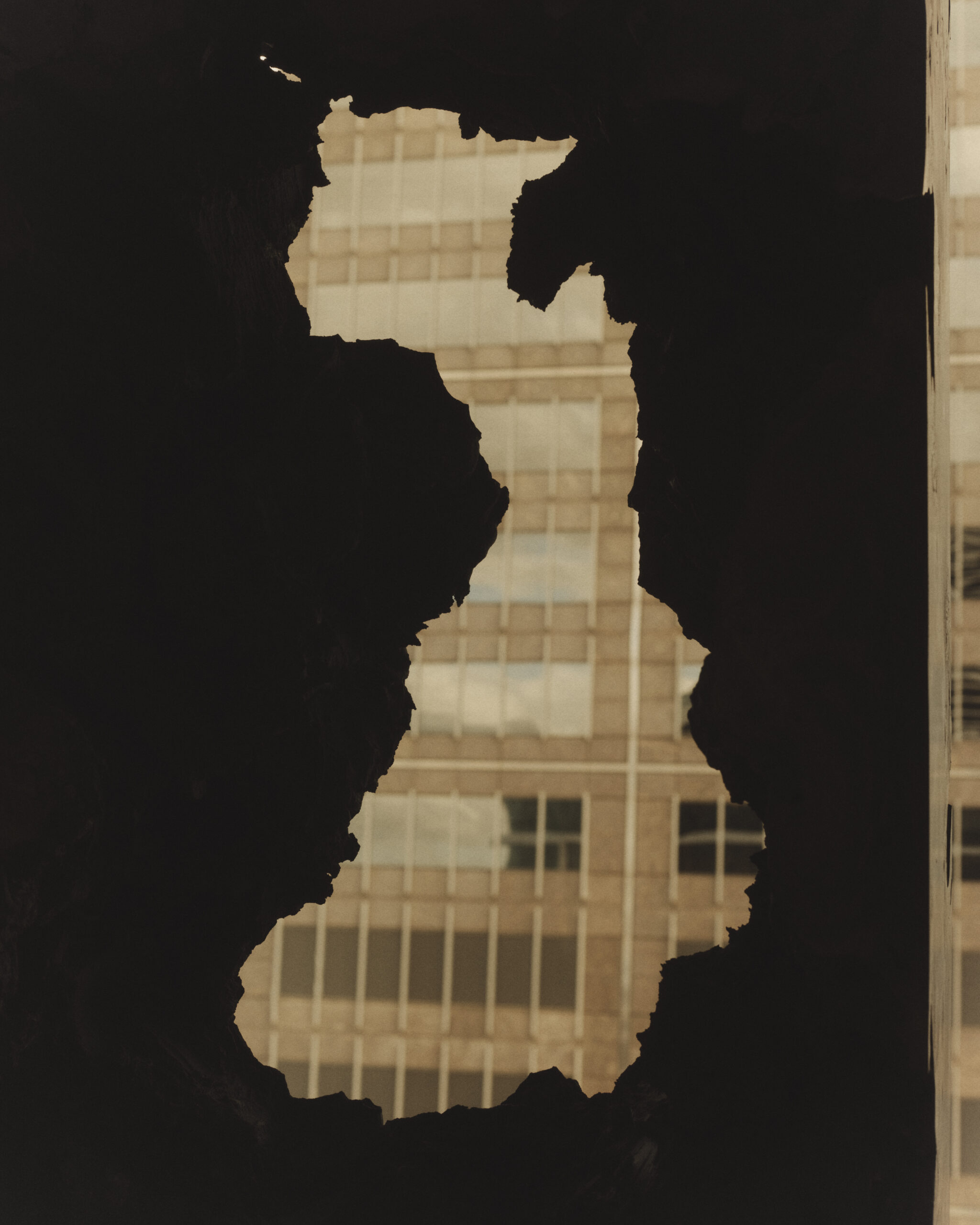
What materials, techniques, or processes did you utilise in your artwork?
It’s a contradictory process. There is casting matter into a very precise mold where all numbers are divisible by 8 and 4 (Asian numerology), and then, on the contrary, the transferal of matter into the mold is not a clean pour but done completely with my hands as volatile, sometimes mindless action under limited time constraints.
It is very physical – there is a lot of spatial action. Rotating, pushing, lifting, tilting, striking, throwing… even crawling into the mold. But I do like that the result appears eroded, when in fact the sculpture is made additively – not by subtraction from a block. It’s an inversion on how you perceive things, to tell you not to always trust your eyes. People ask me how I achieved the negative space – did I use positive mold? No, I didn’t do anything at those moments, and that is the shape. Maybe it’s because I couldn’t see anything.
Do you see your engagement with this project as contributing to your overall artistic vision and goals? If so, in what ways?
I like the immediate dumbness of slabs and masses with these cryptic twists and turns hidden within. The works are getting heavier and are sometimes cracking and buckling with scale and I think that’s exciting.
Kien Situ is a multidisciplinary Asian-Australian artist. Situ works across architecture, sculpture, film and installation. His practice exists to challenge, deconstruct and meditate on notions of space, heritage and identity as the ‘other’ in society. Reflecting on his Sinospheric background (Chinese/Vietnamese diaspora), he is exploring the position of Asian-Australian and immigrant identity in Australia. Situ creates architectural encounters and atmospheres that are reflective of this contemporary state of tension and emerging hybridity. He has had solo exhibitions in public and educational institutions such as 4A Centre for Contemporary Asian Art and The University of Sydney. Situ has also exhibited at Sydney Contemporary 2022 and other international art fairs.

